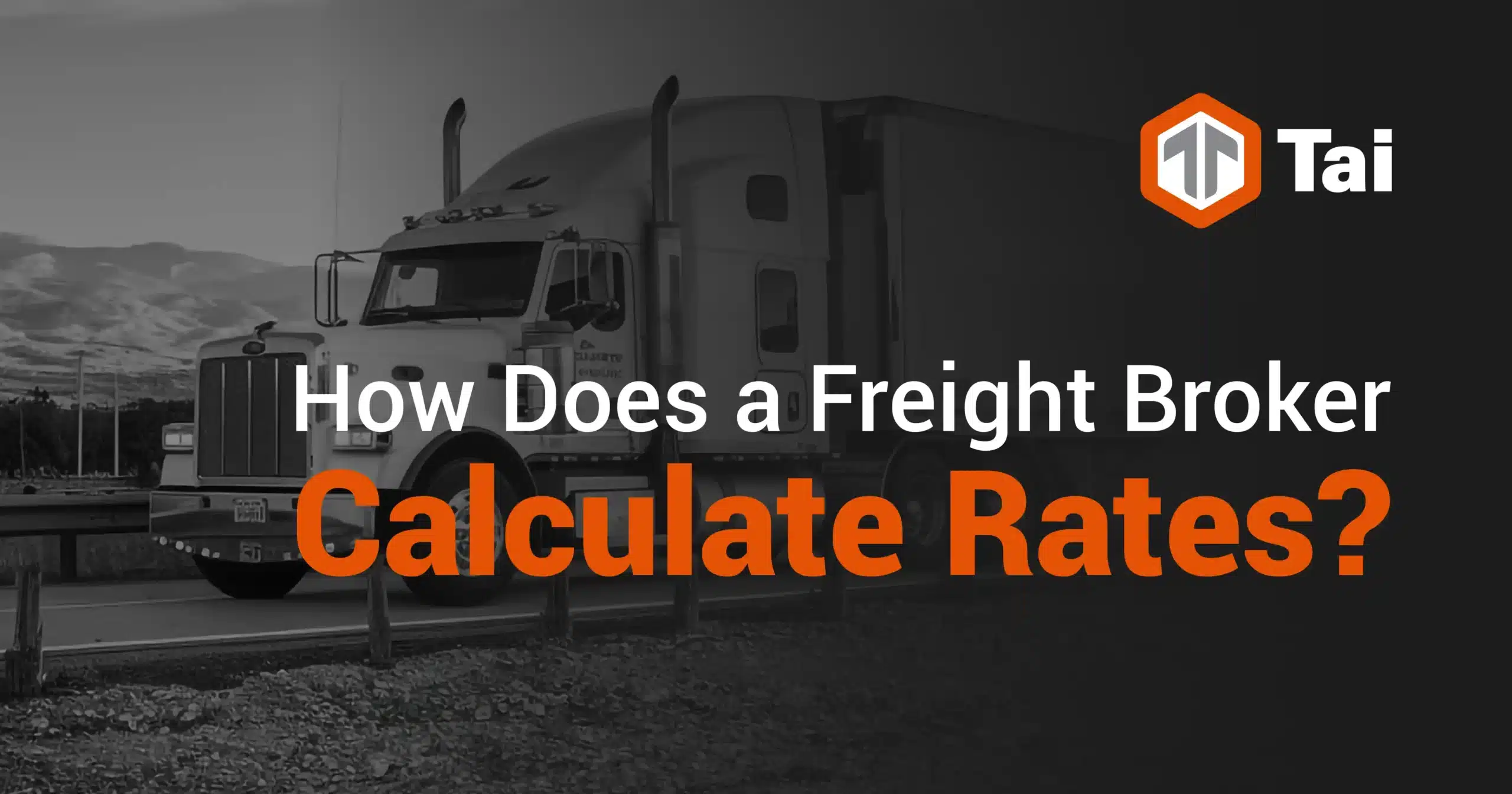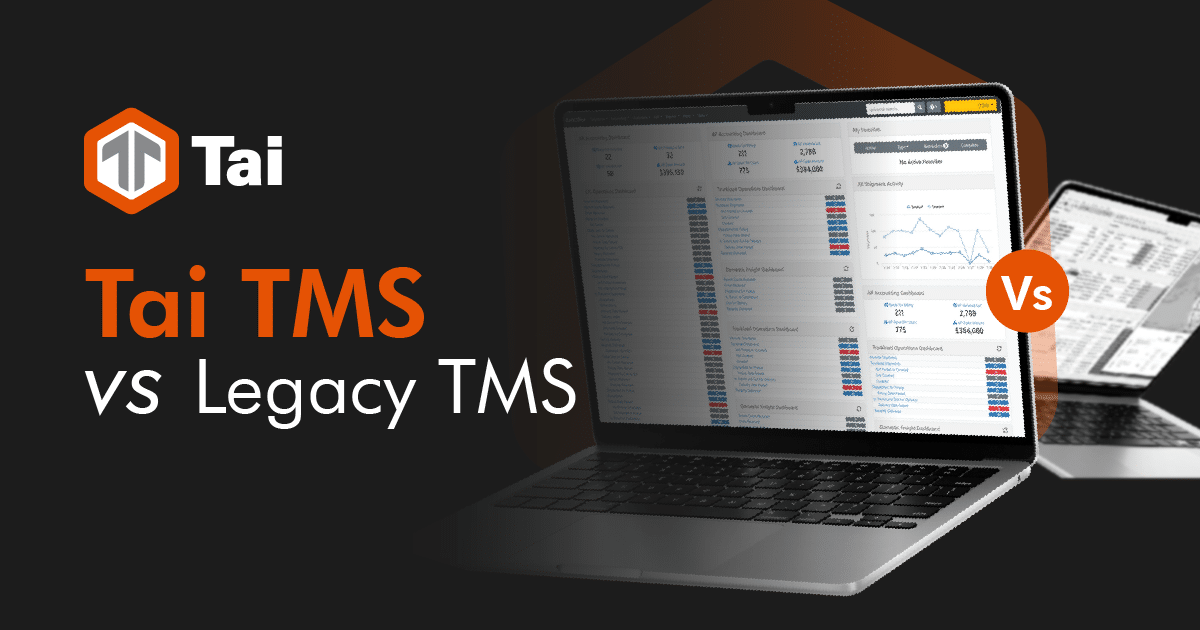How Does a Freight Broker Calculate Rates?
For freight brokers, calculating an accurate and competitive rate is essential for maintaining profitability and securing long-term customer relationships. However, pricing a load requires more than simply checking a rate board or using a one-size-fits-all freight rate calculator. If your process relies only on these methods, you’re losing both loads and margin.
Winning more business requires a data-driven and strategic approach. This approach involves leveraging historical data, market intelligence, and strong carrier partnerships to determine competitive and profitable rates, putting you in control of your business’s success.
This guide breaks down the step-by-step process for calculating Full Truckload (FTL) and Less-than-Truckload (LTL) rates using data-driven methods.
How to Calculate Full Truckload (FTL) Rates
FTL pricing is influenced by lane demand and capacity, fuel prices, carrier availability, and contracted rates. If you rely on uninformed and time-consuming practices like placing loads on spot market boards and waiting for the lowest bid, you’re probably experiencing inconsistent pricing, service failures, and margin loss.
What’s a better approach? Negotiate contracted rates with trusted carriers in key lanes. Strong relationships give you access to predictable, competitive pricing while ensuring service reliability. However, because of the variability in the freight market, you must also be knowledgeable about both current and historical lane rates. This knowledge is readily available through a powerful TMS like Tai’s.
Keeping these variables in mind, here’s the best-in-class step-by-step process for calculating a competitive FTL rate.
Step-by-Step FTL Rate Calculation
Establish a Baseline Rate
- Review historical lane rates from past bookings (last week and last month).
- Analyze rates from both won and lost loads to gauge market competitiveness and look for hidden opportunities with carriers who want to work with you.
- Compare current rates using real-time pricing tools (FreightWaves SONAR, Greenscreens.ai, DAT RateView, Truckstop).
Analyze Current Market Conditions
- Factor in current mileage rates and fuel costs and adjust rates accordingly.
- Evaluate lane capacity (high demand = higher rates, low demand = lower rates).
- Consider origin and destination trends to avoid deadhead costs.
Generate a Quote for the Shipper
- Adjust for urgency and margin goals (higher margin for premium service, lower for competitive pricing).
- Add an appropriate margin to cover operational costs and profit.
- Use your intuition and experience with the market, customer, and carrier to calculate a competitive quote.
If Quote is Accepted, Secure a Carrier and Finalize the Booking
- If a contracted carrier is available, dispatch the load immediately.
- If no contracted carrier is available, post to a load board with confidence in market-aligned pricing.
Speed is Critical
Yes, this process is aggressive. That’s the point. Today’s market requires an aggressive yet data-informed pricing approach. Shippers won’t wait for you to reach out to various carriers and collect rates. Access to accurate, real-time market data gives you a reliable benchmark for calculating freight rates, helping you secure dependable carriers that offer fair pricing and quality service. With the right data at your fingertips, even the greenest broker on your team can make educated pricing quotes in minutes instead of hours. Tai TMS is your powerful ally in making this happen.
How Tai TMS Optimizes Your FTL Calculations
Tai TMS stores your quoting data for both won and lost loads. The system also integrates with the leading digital pricing tools and load boards for an amplified look at the current freight market. All of this data is available on one dashboard and viewable by anyone on your team. Everyone on your team, regardless of experience, will have access to powerful analytics that show you win/lose ratios per carrier and broker, what carriers are your best partners, which lanes are the most competitive, and more. The system ensures that all brokers can quickly generate and quote competitive, data-driven rates directly in the dashboard without toggling between multiple screens and platforms.
How to Calculate Less-than-Truckload (LTL) Rates
LTL pricing is more complex than FTL due to the many variables affecting final costs. Instead of quoting a single truck rate, you must account for:
- Freight class and density (weight, dimensions, and commodity type).
- Lane-specific rates and capacity (mileage, fuel, and demand).
- Accessorial charges (special handling, liftgates, residential delivery, etc.).
Step-by-Step LTL Rate Calculation
Determine the Freight Class
- Use the NMFC (National Motor Freight Classification) system to assign a class based on commodity type.
- Calculate density (lbs. per cubic foot) using weight, height, length, and width.
- Adjust for stowability, handling, and liability factors.
Analyze Lane-Specific Costs
- Consider mileage, fuel, and terminal handling fees.
- Compare contracted carrier tariffs to spot market pricing.
Include Accessorial Charges
- Add costs for inside delivery, liftgates, limited access locations, and additional handling.
- Ensure accessorials are included upfront to avoid unexpected charges after delivery.
Calculate the Final Quote
- Combine freight class, lane pricing, and accessorial fees into one comprehensive rate.
- Add an appropriate margin for profitability.
How Tai TMS Simplifies LTL Pricing
Tai TMS simplifies LTL pricing by automating many of the inherent variables. The system provides accurate classifications for every commodity. The density calculator computes the accurate density once your broker inputs the load dims. Tai’s integration with Shiplify pre-fills accessorial charges based on location, freight type, and historical data. Additionally, Tai TMS provides real-time access to your carrier tariffs. Just like FTL, Tai TMS stores your quoting data for both won and lost LTL loads. All these tools and data are available on one dashboard and viewable by anyone on your team.
LTL can be difficult to manage without extensive knowledge of its variables. Tai TMS simplifies the process by giving your brokers the tools and insights they need to quote accurately, confidently, and profitably.
Final Thoughts: Streamlining Rate Calculations for Better Profitability
If your team relies on manual pricing methods or incomplete data, they’re likely dealing with slow and inaccurate quoting processes and missed opportunities. Top brokers leverage historical data, market insights, and automation to calculate competitive rates efficiently and quickly. By doing so, they’re winning more loads every day. This deepens their carrier relationships, helps them deliver exceptional customer service, and increases profitability.
Tai TMS is the Foundation for Profitable Quoting
Tai TMS stores all historical quote data (both won and lost loads) in one central location. This enables you to make better-informed pricing decisions than many who don’t have access to these insights. Through integrations with top pricing tools, loadboards, and calculators, Tai offers your team real-time market rate accuracy, eliminating guesswork and delays. Tai TMS enables you to respond instantly to shippers and secure more loads with less effort.
Tai is a comprehensive solution that streamlines every aspect of the shipment lifecycle, from quoting and booking to tracking and invoicing. With Tai, your team can operate with greater speed, accuracy, and profitability.
Want to quote faster, win more loads, and improve margins?
Schedule a demo of Tai TMS today!







